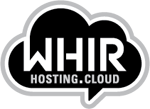This article originally appeared at The WHIR
Most manufacturers worldwide have more than two applications on a public cloud (66 percent) or a private cloud (68 percent), and are likely to adopt “cloud-also” or “cloud-first” IT strategies moving forward, according to a new study from consultancy IDC.
IDC’s “Worldwide Cloud Adoption in the Manufacturing Industry” analyzes manufacturing trends related to cloud adoption and is based on IDC survey data such as the 2014 IDC CloudView Survey which polled 593 manufacturers across 17 countries.
The analysis shows that manufacturers are generally spending less on traditional IT, and that both line-of-business leaders and their IT organizations are increasingly seeing the cost and speed advantages of the cloud for deploying IT resources. But they also seem to be embracing the cloud for manufacturing-specific areas such as business processes in the plant, supply chains, and product development and introduction.
“Traditional IT spend is clearly on the decline, and manufacturers must update their cloud road maps to ensure their investments benefit the business,” IDC Manufacturing Insights research director Kimberly Knickle said in a statement.
The most common applications either deployed or planned to be deployed in the next two years are email, CRM for marketing automation, CRM for sales automation, and financial and accounting ERP. Cloud-based email is currently deployed by 29 percent of manufacturing respondents, which the study authors noted seemed suspiciously low, but 48 percent plan to have email in the cloud in two years, which seems more inline with current enterprise trends.
Regionally, Asia/Pacific demonstrates the strongest adoption rates of public cloud for more than two small applications, given manufacturers prioritizing rapid acceleration in the region and the ease at which cloud computing can provide IT and communication to a remote factory without major onsite IT staff.
In Europe, high private cloud adoption indicates a willingness to adopt cloud while retaining control over the operating environment. Knickle, however, sees public and hybrid cloud computing eventually overtaking private cloud implementations mainly because of the cost advantages.
Across all regions, however, IDC sees a shift where IT buyers are steadily moving towards cloud-first strategies where cloud is considered the best option, as well as cloud-also strategies where cloud options are considered at the same time as other traditional suppliers and software. Cloud-Also is the most common strategy for new and replacement IT investments in the public cloud with 61.6 percent of companies saying they were taking a cloud-also approach to net new IT services, and 56.8 percent for replacing IT existing functionality.
With the emergence of mobile, cloud, big data, social enablement, and even the Internet of Things, there are so-called “3rd platform” technologies aim to bridge these areas and which are likely to drive significant changes in manufacturing.
Knickle notes, “Manufacturers are in the midst of a digital transformation, in which 3rd platform technologies are absolutely essential to the way they do business and in the products and services they provide to their customers. Consequently, a strategic approach to adopting cloud is absolutely essential.”
“Manufacturers must ensure that the line of business and IT management work together in defining their requirements.”
This first ran on our sister site The WHIR: http://www.thewhir.com/web-hosting-news/manufacturers-turning-public-private-cloud-idc-report






